Author, Books, Hero's Journey, Inspiration, Motivation, Novel, Outlining, Protagonist, Screenplay, Story Formula, Story Telling, Writing
Outlining
Outlining
Now that you have great ideas for a novel, what do you do next? When you come up with a great new character, and have an amazing environment to place them in, often times you want to sit down and start typing away, writing your story as quickly as possible. The extra time and work of going through an outline doesn’t seem necessary, and, in fact, seems like a waste of time since you know how your character and story are going to play out. Time and again new writers think they can jump right into the story without an outline, but in the long run, proper outlining of a story will make the story better and easier to write.
Think about a time you went on a vacation. You didn’t go to the airport and just hop on whatever plane had a seat open. You didn’t randomly drive to a town and start looking for a hotel with an open room. Like most people, you took time, planned how you were traveling, where you were staying, and looked at all the different options of what you could do. You compared places to go and things to do. You searched for the best rates and the packages that had the best deals. In short, you outlined your trip before you took it.
In high school English class I, like many others, hated the fact that the teacher required us to turn in a first outline, revised outline and a rough draft before we even got to write the finished paper. Looking back, I can see how much improvement there was just from the rough outline to the finished product. As we start writing, more ideas and concepts come into our minds. There’s no way we can act on every one of them for the book we’re working on so outlining helps us keep on a steady path.
It helps to use an illustration when thinking about writing a book. On a sheet of paper draw a straight line. Then two inches above and two inches below draw a dashed line. The start of your story is at the beginning of the solid line and the ending is at the end of the solid line. The story is going to ebb and flow around the solid line, rising and falling, while staying within the confines of the dashed lines. Consider your outline those dashed and solid lines on the paper. It shows you where you need to go and allows freedom to move up and down while keeping you on target.
Everyone is going to work differently on their outlines and pre-work of their books. I tend to go a little overboard with outlining but that makes the writing process a lot easier for me. I’ve written an 80,000 word novel in about eight days, thanks to proper outlining. It took me a week to outline and prepare everything, and when I started writing the actual book itself, 80,000 words were written in eight days. There was no way I could have done that without the proper outline.
So how do you get a proper outline ready for your writing? Here’s the basics of how I do mine. I start out with my environmental concept and main character. From there I’ll use about two or three sheets of paper writing down ideas, concepts, other characters, and anything else that will fit into the story. This is just free brainstorming or an idea storm. I write down anything that I think of that would relate to the story. Nothing is rejected here, everything gets written down. And as a side note, write everything down. There is nothing more frustrating than having an amazing concept but not being able to remember the aspects to it.
Once a number of ideas is written down, I like to make a log-line for the book. This is one sentence that sums up the book. This is what you would tell a publisher if you got just a minute of their time to get them interested in the book. From that one sentence, I will then make a single paragraph that goes into slightly more detail about book.
From the paragraph I then develop what I call the four point framework. This is simply the four main events of the book; the inciting incident, turning point one, turning point two, and the conclusion. Later, I’ll be dedicating a blog to the four point framework and how to use it but for now just know it’s the next step of the outline.
After I have the four point framework, I create the cast of characters that are going to help and hinder my main character along the journey. I start by creating eight characters, each one fitting one of the eight archetype characters. Again, I will have blogs about each one of these characters, how to use them and how they fit in an overall storyline. Once I have each of the eight major characters figured out, I do a character profile for each one of them. A list of extra characters is developed next, understanding what each one could do or how they are going to fit into the story.
After I have the characters figured out I develop the ’12 point hero’s journey.’ The hero’s journey is something that has been studied by historians, mythologists and writers for decades now. The hero’s journey is the path that all great heroes take. This plot structure is seen in some of the oldest and most lasting stories that we tell and it is very easy to see in the newer writings and stories of some of the best contemporary writers. The twelve points were developed by deconstructing the classical works that are still lasting today and looking at the similarities that their heroes go through.
Once the hero’s journey is completed, I start with a chapter outline. I write out a one paragraph description of what each chapter is going to contain. It is a synopsis of what that chapter will be. After I have the paragraph, I list all the characters that will be in that chapter and I include a sentence or two on why this chapter needs to be in the book. What is this chapter doing for the overall story? This allows me to know exactly what this chapter is going to need to do so that it keeps the story moving, progressing along towards the end. I also include what point in the hero’s journey the chapter is in so that the hero is acting accordingly.
Now that I have a chapter outline that covers the entire book, from beginning to end, I go back to the beginning. I look at those first pages I wrote out that contain ideas and concepts for the book. I see how many I included, how many I left out. Which ones should be adjusted and which ones are great the way they are? In all that outlining, I always come up with some more ideas that get worked in. Many times as I look though the original concepts I begin to change some characters and some chapters around. During this time I read through the chapter outlines. Some get shuffled around. Some get thrown out. This is the discovery process of the book.
Once I’ve gone through the chapters again and I feel that I’m ready to start writing the book, I usually set it aside and work on a different project for a couple weeks. When I return to the outline, I read the chapter outlines again with a fresh set of eyes, looking at the story and characters in new light. I edit anything that I think needs to be edited. I review each and every chapter, look at the rational for it being included. I look at how each chapter builds the characters and the story.
At this point I know many people think it’s time to get started writing but I take one more step. I write the story in screenplay format. Screenplay format is what’s used for the movies. This style of writing includes all the dialog along with some direction exposition. This allows me to see how the characters are going to interact with each other and how they speak to each other. It allows me to find the character’s voice while watching the story progress.
Once the screenplay is finished I can take a good look at the entirety of the story. I can see the character and plot arcs, the interactions between characters and how the story comes together as a whole. I compare the screenplay to the chapter outlines and verify that everything is needed and works together to make the story complete. Writing in screenplay format is a great way to see what characters are not fully developed and need to be expanded. It also is a good way to find what needs to be cut out or where something needs to be added.
From the screenplay, I create the rough draft. When writing the rough draft, I don’t stop at all to edit anything. This is just writing. I ignore misspelled words, misused words and incorrect grammar. This draft is to get the story onto paper. I use both the screenplay and the chapter outline. This is where you can really do some fast writing. This rough draft allows you to see the true length of the story. You will have a very good idea of what the finished product will look like. When the rough draft is finished you’re getting closer to having a finished product but there are still some more steps to go through.
Take the rough draft and edit it. Fix all the spelling and grammar. Find out where the story seems slow and awkward and smooth it out. Make sure that it flows properly. Does it stay within the lines, moving everything towards the conclusion? Does a scene or character stray too far out from the main plot? This is where all those final issues need to be solved. Aside from spelling and grammar, there should be very few plot and character errors here but the point of editing a rough draft is to spot all the final issues that need to be taken care of.
I always print the rough draft and edit on the paper, actually deleting the rough draft from my computer. This forces me to retype the entire novel. This rewriting process is where I catch a lot of grammar and word mistakes. Any final issues will be edited here and by this point the story should be finished. The only thing left is to do the final polishing. When I have finished retyping the novel, that’s when I set it aside again and work on another project for around a month. Then I return and read it, correcting any mistakes that I see.
I hire an editor to look over my work. It is impossible for most people to edit their own work, especially something that they hold very dear. Having family or friends read it is fine, but hiring someone who knows proper English can make all the difference in the world. The editor I use takes about a month to go through the book, then I approve all the corrections while looking it over again myself, then they go through it one more time. By this point, I have a book that is ready for the printing press.
It really does take a lot of work to go from an idea to a finished book. I remember in school there was one student in my English class who claimed that he could sit down and write a paper with no outlining. He always bragged he didn’t need to outline his work. He also got C’s and D’s on his paper. If you are going to submit your work to a publisher, nothing short of an A+ is good enough. An editor isn’t going to read a manuscript that full of plot holes and half thought out ideas. Everything needs to be fully thought out and easily understood in the book.
People are often amazed to see how many loose pages of paper I’ve used just in the beginning stages of my books. It’s not uncommon for me to have over fifty pages of notes, outlines and character development written before I even start making the chapter outlines. Writing a novel is like making a snowball, you take a little bit of snow and start rolling it to add more, making it bigger and bigger. In the outlines, you start out with an idea and keep adding ideas, concepts and characters to it until it is a full book. When you first devise your idea there’s no way to tell how many different directions your book could go.
To try to sit down and just start writing is to cut your ideas off and out. Often times in the outlines I realize that an idea isn’t good enough to work or that two concepts won’t work together. It’s better to figure that out in an outline than to have to rewrite fifty pages of a novel. The outline is one of the most important parts of the writing process. I always say that an outline cannot be too detailed, cannot contain too much information nor can the outline be too long. The more you put in the outline, the better the finished book will be.
There are many parts to the outline that I mentioned here that may be new concepts or confusing to you. Stay tuned to my blog because over the next few weeks I’ll break down the different parts of the outline and show you exactly how to use them to make your writing pop right off the pages.
To see how outlines helped me in my writing career, head over to www.leifericksonwriting.com and purchase one of my books today. Thank you.


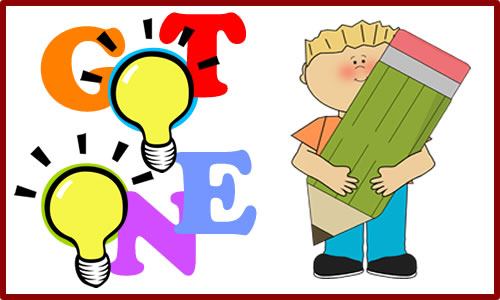
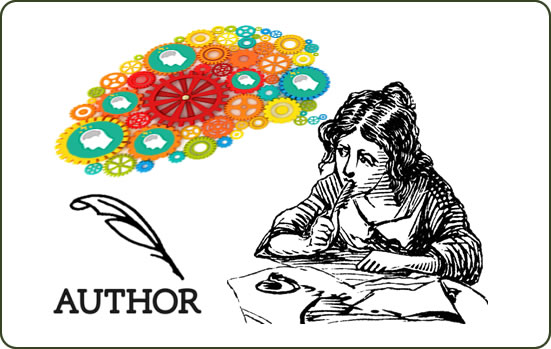







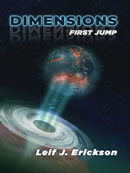
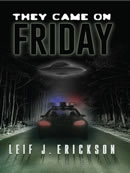

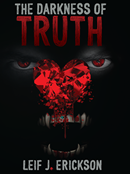
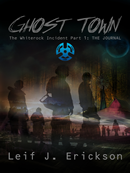
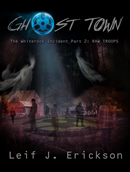

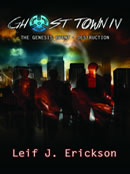

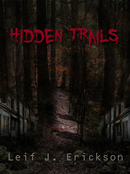
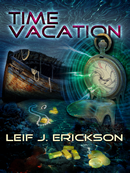





Leave a reply
You must be logged in to post a comment.